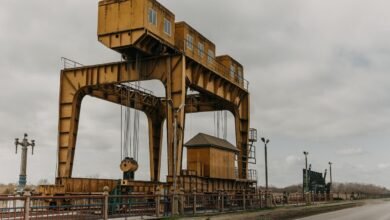How to Build Your Own DIY NASA Parawing 3.7m

The DIY NASA Parawing 3.7m project has captured the imagination of aeronautics enthusiasts and DIY hobbyists alike. Originally inspired by NASA’s pioneering work on the flexible-wing concept for spacecraft recovery, this versatile and compact design is now being reimagined by hobbyists around the world for various lightweight aviation applications.
Whether you’re looking to learn more about aerodynamics, improve your piloting skills, or simply take on a new engineering challenge, building your own NASA Parawing 3.7m is both rewarding and achievable. This guide will provide you with a step-by-step approach to creating your very own parawing, along with tips for optimizing its performance, safety considerations, and insights from the DIY community.
What is the NASA Parawing 3.7m and Why Does It Matter?
The NASA parawing, originally developed in the 1960s, is a flexible, delta-shaped wing designed for spacecraft recovery as part of NASA’s experimental Gemini and Apollo missions. Its simple yet innovative design provides a unique combination of stability, glide efficiency, and maneuverability, making it an ideal blueprint for DIY aviation projects.
The 3.7m parawing is a scaled-down version widely popular among hobbyists for its manageable size and versatility. By building your own 3.7m parawing, you can gain hands-on experience with aerodynamics, materials science, and engineering fundamentals, all while creating a functional flying machine that you can take pride in.
Step-by-Step Guide to Building a DIY NASA Parawing 3.7m
Before you get started, ensure you have a basic understanding of aeronautics and piloting, access to a clean workspace, and the necessary tools and materials. Here’s a detailed guide to help you construct your DIY NASA Parawing 3.7m.
Materials and Tools You’ll Need
Materials
- Ripstop nylon or Mylar fabric (lightweight and durable)
- Reinforced fiberglass or lightweight carbon-fiber rods for the frame
- High-strength thread or fishing line for the rigging
- Adhesive, such as fabric glue or epoxy resin
- Eyelets and clips for suspension points
- Measuring tape and fabric scissors
Tools
- Sewing machine capable of handling lightweight but strong fabrics
- Heat gun (only if using heat-sealable Mylar)
- Power drill for anchoring suspension points
- Cutting tools for rods and reinforcements
Construction Steps
- Design Your Parawing Layout
Start by drafting or downloading a layout of the 3.7m parawing. Several DIY forums and resources provide diagrams scaled for hobbyist use. Ensure key measurements are accurate to maintain aerodynamic stability.
- Cut and Prepare the Fabric
Lay the ripstop nylon (or Mylar) flat on a clean surface. Using your measurements, cut the fabric to the shape outlined in the diagram, ensuring symmetry between both sides of the triangular design.
- Reinforce Stress Points
Add fabric reinforcements to areas most likely to experience tension, such as corners and suspension points. Secure these reinforcements using adhesive or a sewing machine.
- Attach Suspension Points
Install eyelets or small grommets at designated points on the fabric. Ensure these are securely attached to distribute weight evenly and prevent tearing during flight.
- Build the Frame
Cut the fiberglass or carbon-fiber rods according to your layout specifications. Attach these rods to the appropriate edges of the parawing to provide structure and stiffness.
- Assemble Rigging
Use the high-strength thread or fishing line to create suspension lines, linking your eyelets to a central control system or harness. Precisely measure these lengths to maintain balance.
- Perform a Test Assembly
Set up the entire parawing on the ground or in a controlled environment. Verify that the frame is sturdy, the fabric is taut, and the suspension lines distribute weight evenly.
Testing and Final Adjustments
Before taking your parawing for its first flight, conduct thorough assessments to ensure all structural elements are intact. Test the parawing in light wind conditions and make adjustments to the rigging as necessary to optimize stability and responsiveness.
Tips for Optimizing Your Parawing’s Performance
Here are a few expert tips to help you get the most out of your DIY NASA Parawing 3.7m project:
- Choose the Right Materials: Always prioritize lightweight and durable materials to enhance performance and reduce drag.
- Fine-Tune Rigging Tension: Experiment with suspension line tension to find the sweet spot between stability and responsiveness.
- Add Streamlining Features: Attach small aerodynamic elements to reduce drag and improve glide efficiency.
Tools like handheld airspeed monitors can help you fine-tune the flight characteristics of your parawing. If you have access to a wind tunnel, even better!
Safety Measures and Legal Considerations

Though building and flying a DIY NASA Parawing 3.7m is an exciting endeavor, safety should always come first. Here’s what you need to keep in mind:
Safety
- Always wear proper safety gear, including a helmet and gloves, when piloting or testing.
- Conduct test flights in open areas far away from power lines, trees, or densely populated regions.
- Never exceed the weight capacity of your parawing—it’s better to err on the side of caution.
Legalities
- Check local aviation regulations pertaining to lightweight and unmanned flying objects. Some regions may require specific permits for experimental aircraft.
- Always respect no-fly zones and avoid interfering with commercial aviation routes.
Real Stories from DIY Enthusiasts
Many hobbyists across the globe have successfully built and flown their own 3.7m NASA parawings. Take Sarah, for example, a mechanical engineering student who documented her build process on YouTube. She says, “This project not only strengthened my technical skills but also gave me a deeper appreciation for aeronautics.”
Similarly, Mike, an aerodynamics enthusiast, used his DIY NASA Parawing for a successful competition entry in a local aviation fair, where he won first prize for innovation.
These stories showcase the diverse ways in which building a parawing can foster personal growth, technical expertise, and community engagement.
Why DIY Projects Matter for Innovation
Undertaking a challenging DIY project like the NASA Parawing 3.7m offers countless benefits beyond the final product. It enhances problem-solving skills, fosters creativity, and connects you to a community of like-minded individuals who are just as passionate about pushing engineering boundaries.
Are you ready to take on this project? Share your progress, challenges, and success stories with the growing community of DIY parawing enthusiasts.




